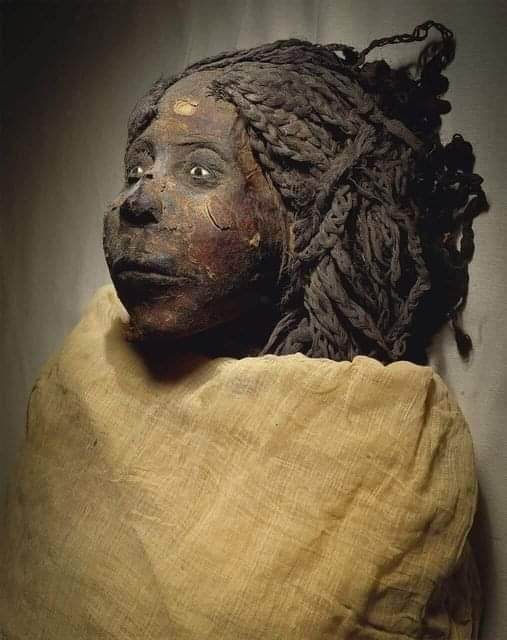The mummy of Queen Nodjmet, a significant figure from Egypt’s 21st Dynasty (approximately 1069–945 BCE), stands as a remarkable testament to the sophistication of ancient Egyptian funerary traditions and cultural practices. Discovered in the famous Deir el-Bahari Cachette (TT320), Nodjmet’s preserved remains rest alongside other influential rulers and high-ranking officials. Her burial provides invaluable insights into the political and religious dynamics of her time.
Queen Nodjmet is widely recognized as the wife of Herihor, a High Priest of Amun who wielded considerable authority during the turbulent late Ramesside period. As both a queen and a religious figure, Nodjmet occupied a pivotal role at the intersection of governance and spirituality. Some historical accounts also link her to Piankh, another prominent high priest, highlighting the complex familial ties among Egypt’s elite during the Third Intermediate Period. This era of divided rule and shifting political emphasis underscores her importance in bridging royal and religious authority.

Though scholars continue to debate her exact lineage—some suggest she was the daughter of Ramesses X and Queen Tyti—Nodjmet’s significance in connecting Egypt’s royal and religious institutions is unmistakable. Her life encapsulates a time of transformation, where theocratic governance rose in prominence and political fragmentation reshaped the nation.
The mummy of Queen Nodjmet exemplifies the advanced mummification techniques of the 21st Dynasty. Her carefully preserved braided hairstyle, visible even after more than 3,000 years, is an extraordinary feature in ancient burials and a rare glimpse into the cultural priorities of her era. This attention to detail underscores the Egyptians’ deep reverence for individuality and beauty, even in death.
To further enhance her lifelike appearance, embalmers employed remarkable innovations. They crafted artificial eyes from stone, sculpted eyebrows from human hair, and used sawdust and resin to restore the body’s natural proportions. Additionally, subtle facial coloring was applied to idealize her image for the afterlife. These meticulous efforts reflect the Egyptians’ belief in presenting the deceased in their prime for eternity, a concept central to their views on the afterlife.
Queen Nodjmet’s funerary ensemble was equally elaborate, reflecting her royal status and ensuring her readiness for the journey beyond. Her burial included a range of artifacts, such as shabti figurines, which were believed to serve as laborers in the afterlife. Canopic jars safeguarded her preserved organs, while a gilded wooden necklace symbolized divine protection and authority. Her intricately adorned coffin featured depictions of the protective goddesses Isis and Nephthys, emphasizing themes of mourning, protection, and rebirth. Together, these items not only showcased her prominence but also illustrated the Egyptians’ commitment to preparing their deceased for a seamless transition to the next world.
One of the most striking aspects of Nodjmet’s mummy is the preservation of her braided hairstyle. In ancient Egypt, hairstyles held deep symbolic meaning, representing identity, status, and spiritual beliefs. The care taken to maintain her braids reflects the Egyptians’ dedication to honoring the personal identity of the deceased, even in death. This detail offers a profound glimpse into their respect for individuality and the cultural significance of hair in ancient Egyptian society.
Today, Queen Nodjmet’s mummy resides in the Egyptian Museum in Cairo, standing as a poignant relic of the 21st Dynasty and the Third Intermediate Period. Her preserved remains not only highlight the artistic achievements of her time but also provide a window into the political, religious, and cultural richness of ancient Egypt. Archaeologists and historians continue to be captivated by her legacy, which symbolizes the intricate funerary practices and artistic mastery that defined this fascinating civilization.
The story of Queen Nodjmet and her burial is not just about preserving a single individual but also about understanding a broader narrative of ancient Egypt’s history. Her mummy is a bridge connecting us to a world of dynamic change, where innovation in mummification and the symbolism of burial artifacts reveal the Egyptians’ deep-seated beliefs about life, death, and eternity. For modern scholars and enthusiasts, her legacy offers both a challenge and an inspiration—a reminder of the enduring mysteries of ancient Egypt and its unparalleled cultural achievements.





